Breaking out: Adult acne is more common than you think
Sign up now: Get ST's newsletters delivered to your inbox

While men get adult acne too, women tend to be more affected due to hormonal fluctuations.
PHOTO: ISTOCKPHOTO
Follow topic:
SINGAPORE – Ms Shina Toh remembers a time when she felt comfortable in her skin. However, the 23-year-old university student says things took a turn two years ago, when she found herself facing an unexpected nemesis: acne.
She started getting whiteheads, pustules (pus-filled pimples) and some cysts (pus-filled lumps under the skin’s surface) on her face.
“It started on my cheeks and occasionally spread to my forehead. This sudden change in my skin condition significantly impacted my self-esteem, causing me to feel less confident when taking pictures,” she says. Her adolescence had been largely blemish-free.
To conceal the bright red bumps on her complexion, she began using more make-up, but doing so only exacerbated the problem.
She reduced her dairy and sugar intake too, but her acne would flare up again after improving for a while.
She began to socialise less as a result.
“Even when I head out, I try not to make eye contact with people in the hopes that they don’t notice my face,” says Ms Toh, who also started relying occasionally on Instagram filters for her photos to hide the condition of her skin.
“It’s amazing how these filters can hide imperfections, but I make a conscious effort to not rely on them too frequently as they can inadvertently chip away at my self-esteem. I am aware that if I constantly use these filters, I will never feel comfortable posting a genuine picture of myself because I fear others will perceive me differently,” she adds.

Ms Shina Toh says getting acne in her 20s has shattered her confidence and self-esteem.
PHOTO: SHINA TOH
Dr Kenneth Thean, medical director of Ensoul Medical Clinic, says studies have shown that adult acne is more common than one thinks.
“While acne is most commonly associated with adolescence, a local study published in The Journal of Clinical and Aesthetic Dermatology in 2019 has shown that approximately 41 per cent of adults, particularly women, experience acne during their adult years,” he says in an e-mail interview with The Straits Times.
“Adult acne can occur in both men and women, although women tend to be more affected due to hormonal fluctuations related to menstrual cycles, pregnancy and menopause.”
Several factors contribute to the development of adult acne, he adds.
“Hormonal imbalances, such as increased androgen levels, can trigger excessive sebum production, leading to clogged hair follicles and subsequent acne breakouts. Other factors such as genetic predisposition; increased inflammation; lifestyle choices like diet, stress and lack of sleep; and the use of certain cosmetics or medications can also play a role in the development of adult acne.”
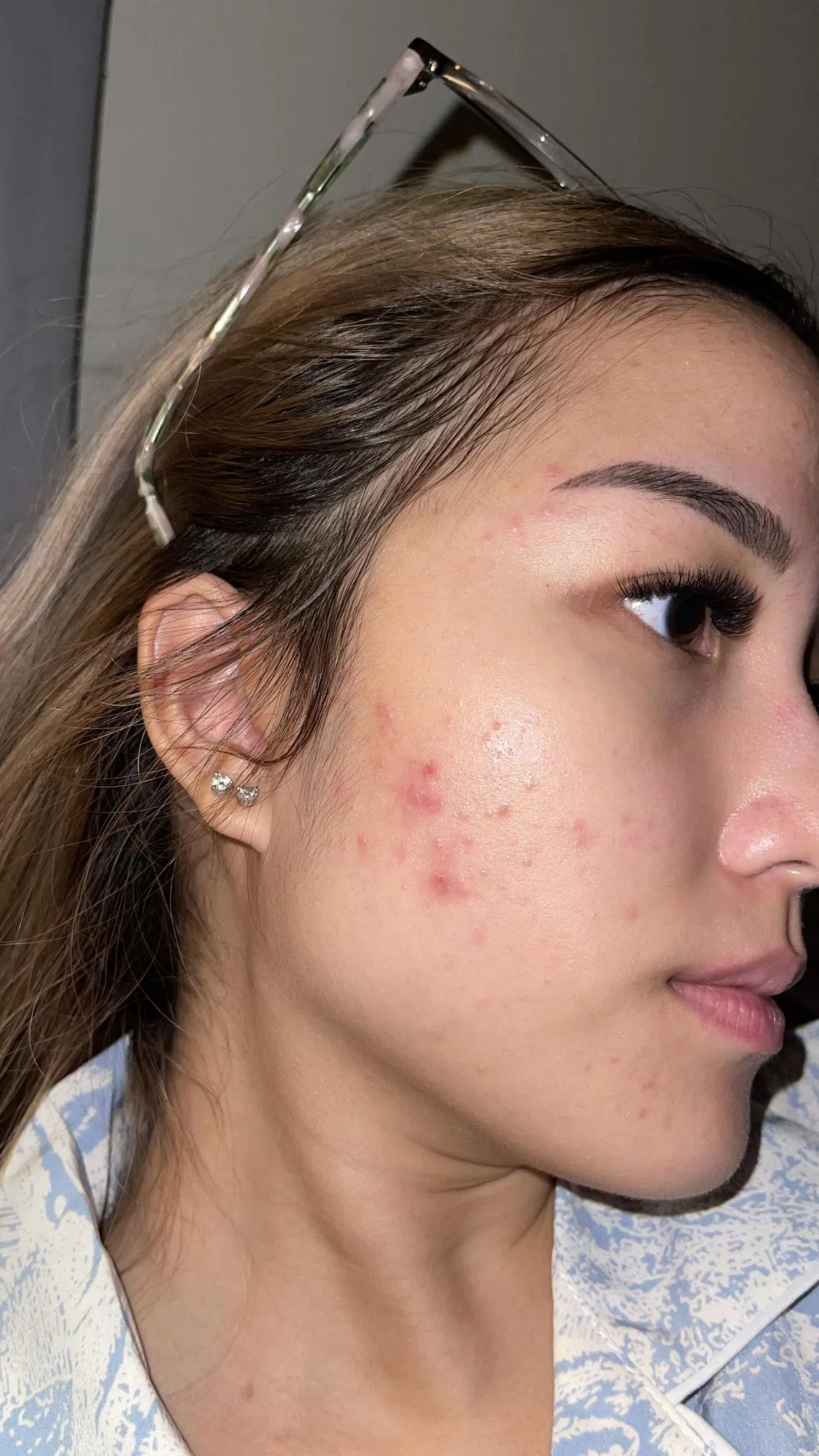
Ms Shina Toh says piling on more make-up only exacerbated her acne.
PHOTO: SHINA TOH
Singapore’s tropical weather does not help either. Dr Kok Wai Leong, senior consultant, dermatologist, at StarMed Specialist Centre, says that warmer temperatures and humid environments can worsen acne.
“Studies have shown that hotter temperatures lead directly to an increase in oil gland activity. This increase in sebum (oil) production clogs the pores in the skin, which leads to formation of pimples,” adds Dr Kok.
Dealing with acne can be difficult, which is why a 2018 research by the British Journal of Dermatology found that patients with acne are more prone to anxiety and depression.
Life coach Shireena Manchharam says her experience with adult acne was exhausting and depressing.

Ms Shireena Manchharam says she was once depressed because of her skin.
PHOTO: SHIREENASM/INSTAGRAM
“In Asia, our expectations of perfection are so high and it felt so unattainable. It became such a hindrance that I used to wear excessive amounts of make-up to cover up my acne and acne scars, or I used my hair to cover the sides of my face,” says the 40-year-old.
Beating those blemishes
The rise of social media – where appearances are meticulously curated and flawless skin is often perceived as a symbol of beauty – has resulted in a heightened awareness and sensitivity towards even minor skin imperfections.
“Acne has gained prominence as individuals seek to achieve clearer complexions for their online presence. This demand is not limited to younger age groups. Many adults, who previously dismissed their acne as a temporary phase or a cosmetic concern, are now seeking professional medical help to achieve a clear complexion,” says Dr Thean.
He adds that he has seen a 20 to 40 per cent increase in demand for acne treatments in the last five years. Adults make up about 90 per cent of his clients.
Citing an array of over-the-counter treatment options for acne which do not require any prescription, he says: “These products are typically used for treating mild to moderate levels of hormonal acne with symptoms such as blackheads and whiteheads.
“The common drawback is that they are often too drying, which causes the skin to become more irritated, resulting in more breakouts, or that at some point, the over-the-counter treatment stops working. Once over-the-counter topical treatments don’t work, it is time to see a doctor.”
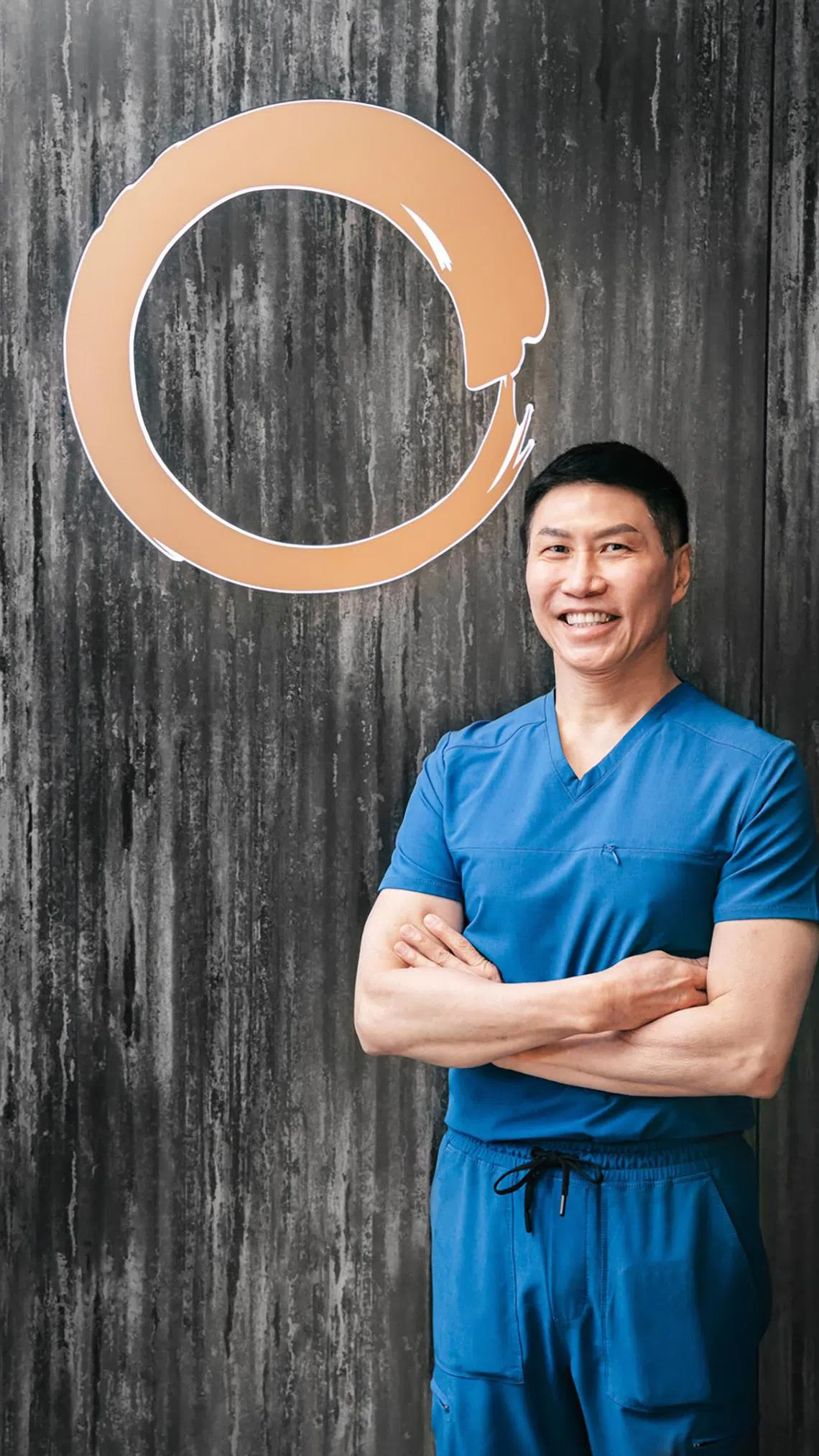
Dr Kenneth Thean, medical director of Ensoul Medical Clinic, says that treating acne requires time
PHOTO: DR KENNETH THEAN
There is no universal solution to pimples. To counter them, doctors usually prescribe antibiotics as a first line of defence. Other oral treatments include isotretinoin, a derivative of vitamin A, as well as oral contraceptives.
There is also a number of in-clinic treatments used to fight zits and the overactive sebaceous glands and bacteria that cause them. According to Dr Thean, these include lasers, radio-frequency microneedling, medical-grade peels, intense pulsed light and LED phototherapy.
“Effective acne treatment typically involves a combination of approaches and modalities, including topical treatments, oral medications as well as in-clinic treatments,” he says.
He adds that treating acne requires time, since the skin needs to shed these impurities and regenerate.
“Skin turnover generally takes four to six weeks, which means any treatment or product needs an adequate amount of time to have a visible effect on the skin. Generally, with the combination of modalities, improvements can be seen within one to three months, and it takes three to six months to achieve a completely clear complexion.”
Similarly, Dr Kok has raised doubts about products that claim to work overnight. He emphasises that there is no quick fix.
“In reality, acne treatment takes time to work. This is especially so in cases in which there is severe inflammation – time is required for the effects of the treatment to show and for inflammation to resolve. Even if your condition has improved, there is a need to have a maintenance plan to prevent flare-ups,” he says.

Dr Kok Wai Leong, senior consultant, dermatologist at StarMed Specialist Centre, has raised doubts about products that claim to work overnight.
PHOTO: DR KOK WAI LEONG
Ms Manchharam says she was finally able to resolve her skin issues at age 38, after more than a decade of experimenting with different pills, products and diets.
“What eventually did help me was getting on Accutane,” she says, referring to the prescription form of retinol which can cause side effects such as dry skin, chapped lips, skin infection or rash and joint pain.
“It did have some side effects, but the best thing was the clearing up of the acne. I then had to laser off the scars.”
She is very pleased with the results even though she still gets acne occasionally.
“Even today, when I leave a photo untouched, I feel like pinching myself because it’s been such a long journey... and it feels like a miracle now to be able to have that clear skin. It’s by no means perfect, but I’m confident with how it is and how I feel now.”
Acne positivity
Ms Quinn Chen, 26, managing director of home-grown beauty brand Ice’s Secret, says she, too, grappled with acne a few years ago.
“When I initially sought skincare advice, I encountered numerous challenges. Online sources were flooded with misinformation, making it difficult to discern between dubious information and genuinely useful tips, while specialist-prescribed solutions like antibiotic pills and creams were often prohibitively expensive,” she says.
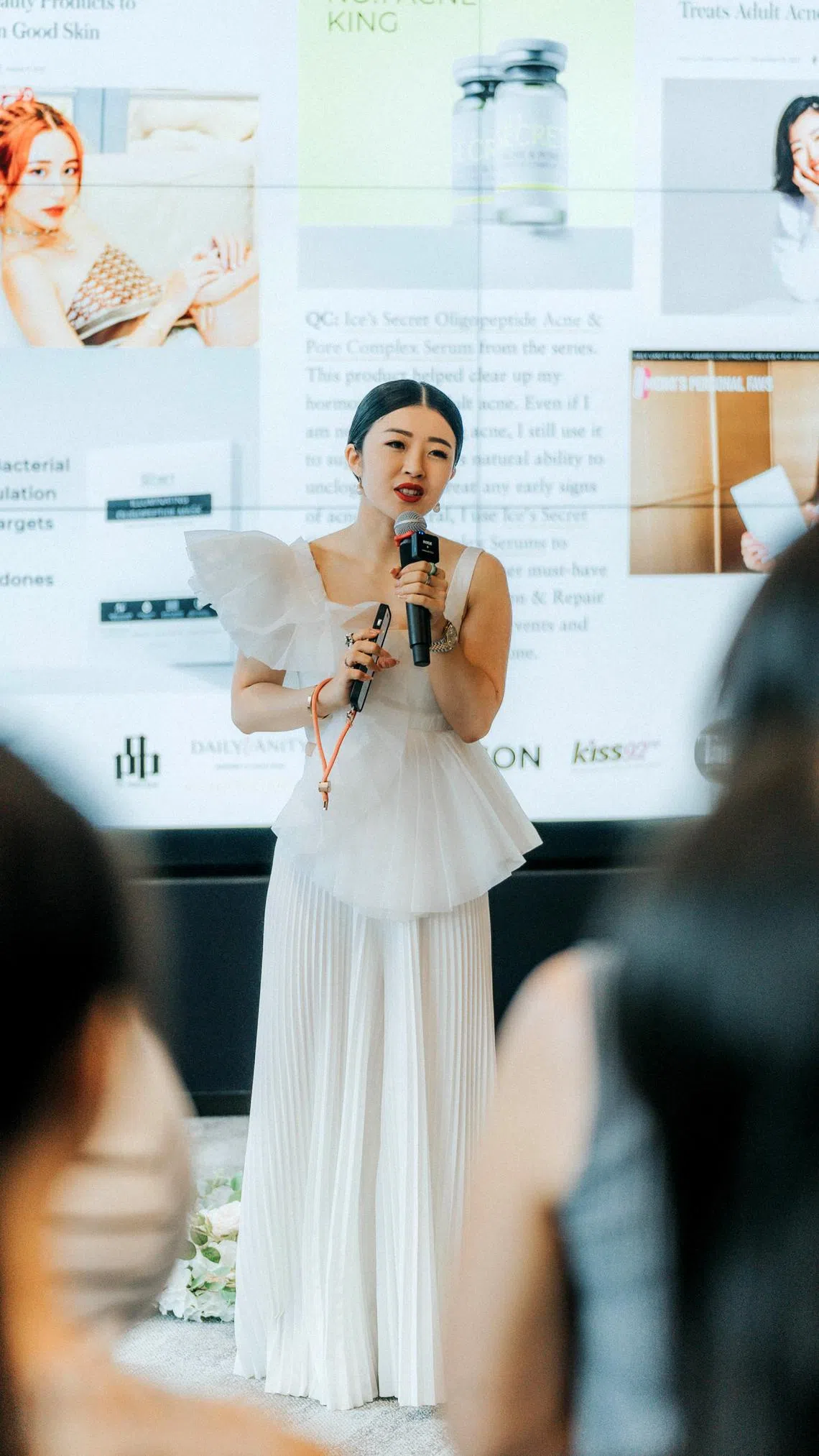
Ms Quinn Chen says she began developing a range for blemish-prone skin after her own experience with acne.
PHOTO: ICE’S SECRET
She came up with her own solution in 2020, by developing a range of blemish-friendly skincare products that are specifically adapted to work in South-east Asia’s climate.
“One significant factor that sets us apart is our understanding of the impact of South-east Asia’s higher humidity and temperature on the skin. Unlike beauty products from other countries which are designed for colder climates, our formulations are optimised to address the challenges posed by the region’s climate, making them more effective for individuals dealing with adult acne in South-east Asia,” she says.
She adds that she worked with a group of product engineers and cosmetic chemists based locally and in Taiwan and Australia.
Ice’s Secret also became one of Asia’s first beauty brands to challenge the status quo last year when it launched its #Dropthefilter campaign in March 2022.
Participating in the campaign were 30 content creators, including Candy Choo and Gwen Toh, who flaunted their pimples, red blotches and other “imperfections” on social media.
“We wanted to empower individuals to have the confidence to embrace their bare-faced beauty and feel comfortable in their own skin,” says Ms Chen.
This move is not new. There is an ever-growing number of brands that are featuring “real people” in their advertisements instead of models with flawless, airbrushed skin.
This shift reflects a powerful movement towards inclusivity and authenticity, redefining what it means to be beautiful in today’s world.
In late 2019, Canadian beauty company Blume launched a new campaign titled Celebrate Skin, in a bid to “normalise” pimples.
In 2021, American skincare brand Dermalogica joined forces with acne-normalisation photographer Peter Devito to create a series of visuals to destigmatise breakouts and celebrate real skin.
Acne-positive content creators are also a growing force in the skincare industry.
By proudly flaunting their constellation of acne and scars on social media, skin and body positive influencer Izzie Rodgers (@izzierodgers) and acne model Maia Gray (@its_just_acne) are promoting acceptance, education and transparency around unfiltered skin.
For Ms Toh, who does not have a budget to visit a dermatologist, these influencers have had a profound impact on her life.
“I find solace in following these advocates and influencers who share a realistic perspective on how our skin truly looks. Their messages remind me that I don’t have to conform to societal beauty standards, and that it’s okay to have blemishes or uneven skin,” she says.
Ms Toh is also managing her acne with the help of skincare.
“I have experimented with different skincare treatments and products, including Pico laser and various acid- and non-acid-based products such as salicylic acid, lactic acid and niacinamide, but none worked. Surprisingly, it was the acid-free products that provided the most effective results,” she adds.
In a candid Instagram post last year, Britain-based blogger Beth Cooper wrote: “My skin doesn’t change how I love. Or my intelligence. Or the way I care for others. Or my ability to do my job. Or my beauty. Your skin doesn’t define you.”
In the unfiltered selfie featuring her bare, acne-speckled skin, she looks straight at the camera, a smile playing on her lips.
AI to the rescue
In a world where access to healthcare is not always a given, artificial intelligence (AI) is stepping in to fill the void, particularly in the field of dermatology.
Enter La Roche-Posay’s Effaclar Spotscan, one of the world’s first free AI-powered tools designed for those with acne-prone skin.
Co-developed with dermatologists in 2019, the tool utilises analyses of 6,000 scientific images of men and women with different skin types and levels of acne severity. Based on these images, the app helps users assess the type and severity of their acne, in line with the GEA (Global Acne Severity scale), before recommending a personalised La Roche-Posay routine, with just three selfies.
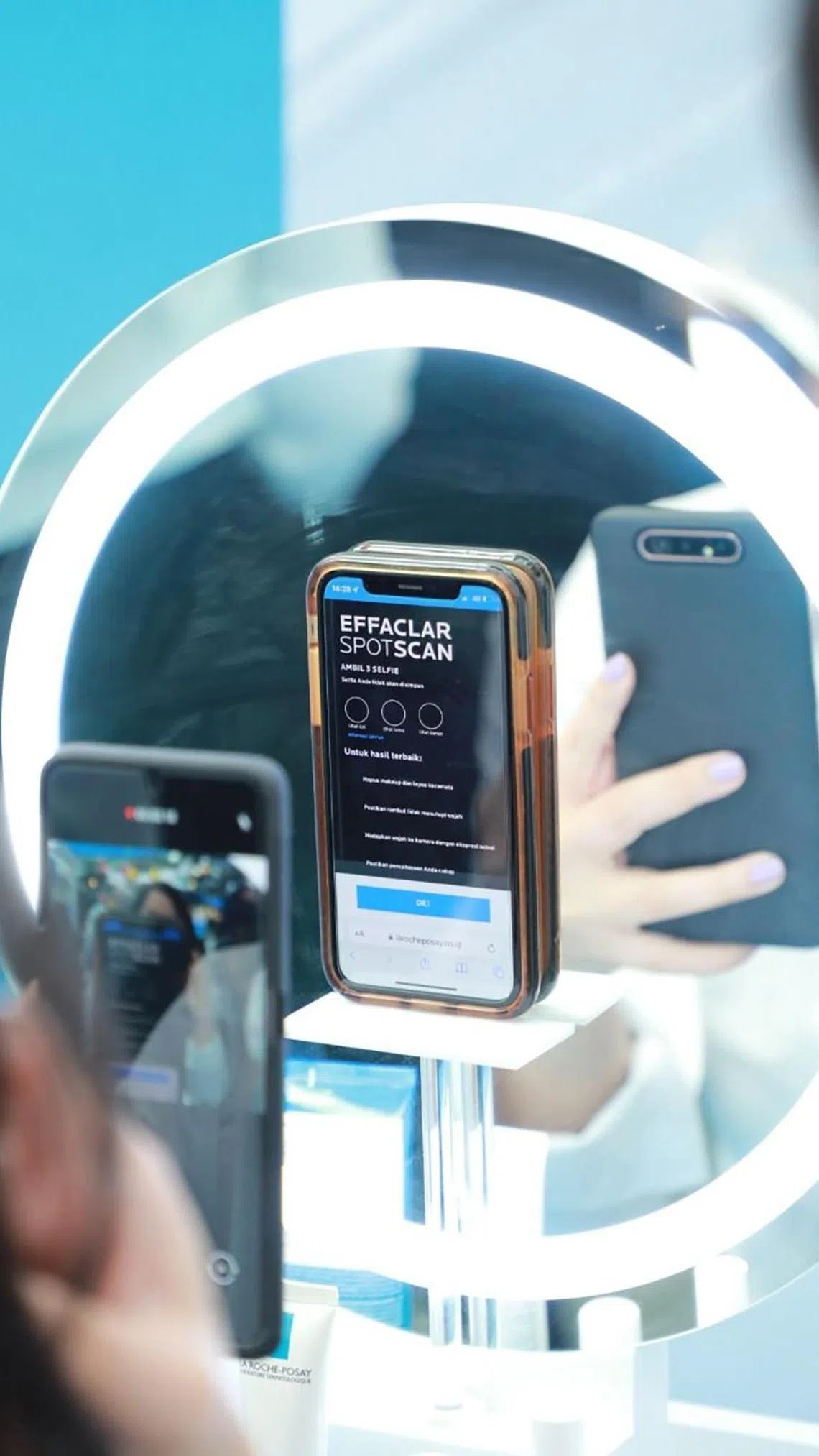
La Roche-Posay’s Spotscan harnesses the power of AI to help diagnose the severity of acne on a user’s face.
PHOTO: LA ROCHE-POSAY
“Spotscan doesn’t replace an appointment with a dermatologist, but it provides a vital first step in understanding one’s condition in a simple way,” says Ms Pauline Loze, general manager at L’Oreal Dermatological Beauty, adding that more than 10 million people have used it.
The tool has been credited with bridging the dermatology gap for underserved populations. Currently, there is one dermatologist serving 60,000 patients globally on average, according to Dr Christopher Hsu, founder of lecture series Global Dermatology.
“In rural India, the number falls to one in a million. However, in Sub-Saharan Africa, the number of specialists is close to nil, with, for example, 13 dermatologists in the whole of Madagascar (which has a population of 26 million),” he says.
AI diagnostics may have their limitations – such as when the image quality is too low to use – but it is a preliminary step in democratising skincare and empowering individuals to take control of their skin health.
You can access Spotscan at www.laroche- posay.co.uk/en_GB/spotscan.html
Debunking acne myths
Acne is caused by a “dirty” face
“While excessive dirt and oil left on the face can aggravate acne, even a properly cleaned face can develop acne. Often, imbalanced hormones are a major contributor to acne, and washing the face multiple times will have no effect on the fluctuating hormones that are causing the acne breakouts.” – Dr Kenneth Thean, medical director of Ensoul Medical Clinic
Acne develops only in people with oily skin
“People with oily skin are often the ones singled out as the only skin type where acne develops. However, the fact is that even people with dry skin are prone to bacterial growth that causes acne. Thus, blackheads, whiteheads and pimples are not dependent on the type of skin.” – Dr Thean
Toothpaste is a great remedy for acne
“Toothpaste is for your teeth, not the skin. What toothpaste does to the pimple is only to dry it out. It does not clear and prevent it from occurring. Toothpaste fluorides can potentially exacerbate the acne problem. The harsh ingredients in toothpaste, when applied to a pimple, can also result in skin allergies like contact dermatitis.” – Dr Thean
People with acne cannot wear make-up
“It is possible to put on make-up even if you have acne. However, the choice of product is important, as some preparations may worsen acne. Look for products that are non-comedogenic and oil-free. It is also recommended to clean make-up brushes once a week as they may harbour micro-organisms.” – Dr Kok Wai Leong, senior consultant, dermatologist at StarMed Specialist Centre
People with acne cannot wear sunscreen
“You should continue to use sun protection even if you have acne, as it helps to prevent pigmentation after acne heals. Moreover, oral medications such as isotretinoin and certain acne treatment creams may cause sensitivity with sunlight exposure.” – Dr Kok
Spot-on skincare
Many skincare brands these days have ranges that are tailored especially for pimple-prone skin. Here are some to check out:
La Roche-Posay
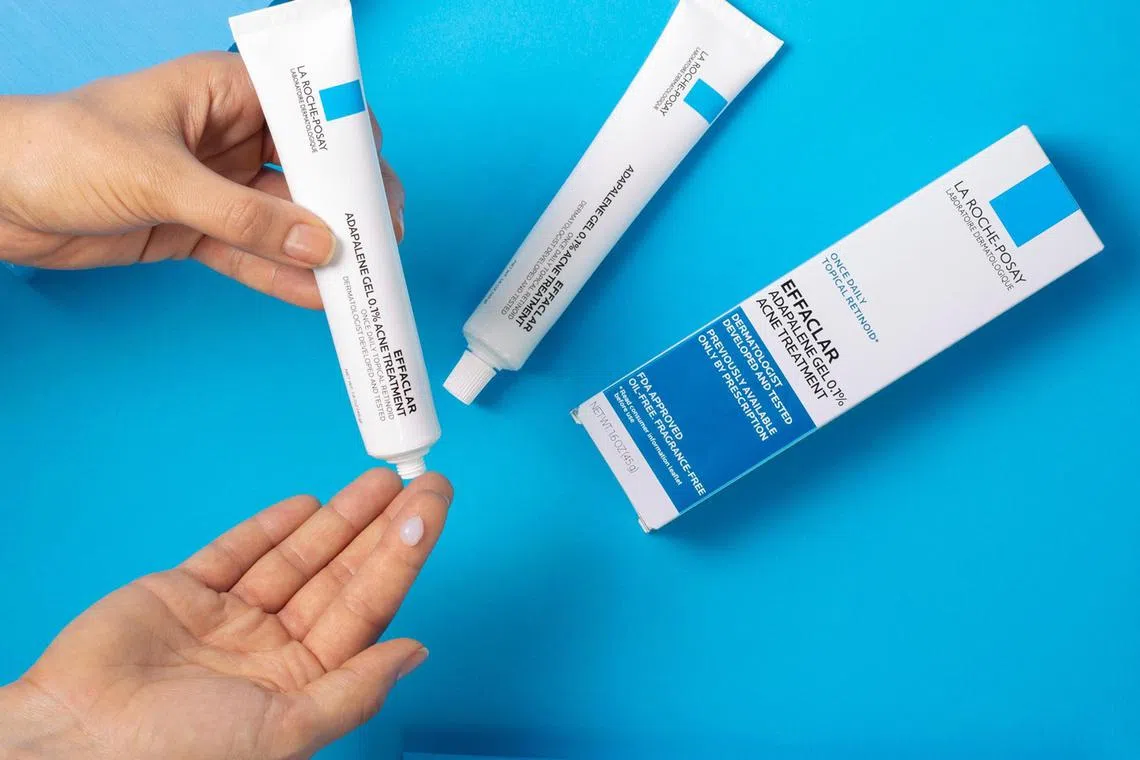
Effaclar Adapalene Gel 0.1%, $70.99
PHOTO: LA ROCHE-POSAY
With their acne-positive tagline, “Progress, not perfection”, La Roche-Posay is a dermatological brand formulated especially for sensitive skin. It has partnered with dermatologists to create the Effaclar range to target different types of acne, including blackheads, whiteheads, red raised pimples and issues related to clogged pores and oily skin.
One of its key products is the Effaclar Adapalene Gel 0.1%, a topical retinoid treatment that contains Adapalene Gel 0.1%, a synthetic molecule that mimics vitamin A to clear and prevent blemishes. Launched in 2019, it is one of the first prescription-strength topical retinoids for acne that can be obtained without a doctor’s prescription.
After 10 years of research, the brand will soon be dropping what has been dubbed as a “breakthrough” product: the Effaclar Duo +M, a gel that destroys C. Acnes Phylotype IA1, a bacterial species which is commonly found on problem skin.
Dermalogica
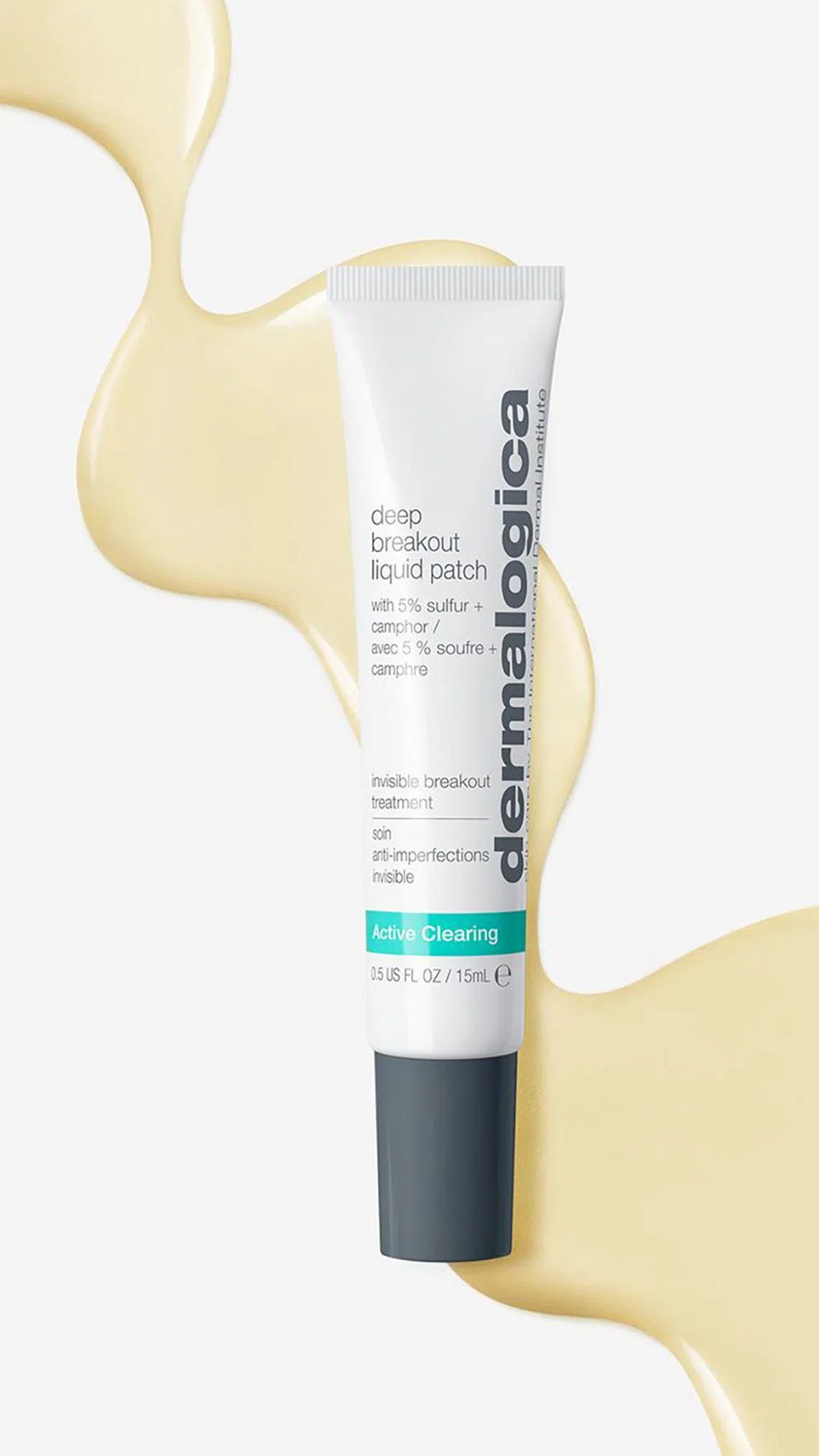
Deep Acne Liquid Patch, $45.90
PHOTO: DERMALOGICA
Professional-grade skincare brand Dermalogica has not just one but two acne ranges.
While “Clear Start” is specifically created for adolescents or young adults with oily skin, the “Active Clearing” range focuses on a powerful cocktail of zit-fighting ingredients like salicylic acid, niacinamide, tea tree oil and exfoliating agents to simultaneously treat adult acne and fight ageing.
Products under this range include the Retinol Acne Clearing Oil, a night oil that blends retinol and salicylic acid into a skin-smoothing formula, and Sebum Clearing Masque, made from clay, niacinamide and calming botanicals such as oat.
Ice’s Secret

Acne & Pore Oligopeptide Complex Serum, $98
PHOTO: ICE’S SECRET
This home-grown beauty label’s formulation is tailored for tropical climates. Its signature products include the Acne & Pore Oligopeptide Complex Serum (to treat acne even for the most sensitive skin), Acne & Pore II Advance Oligopeptide Complex Serum (which targets inflamed, pus-filled acne and hormonal acne while preventing bacteria growth) as well as Acne & Purifying Mask, a hydrating masks that does not contain any acids and is safe for all skin types.
All of Ice’s Secret serums contain oligopeptide, a hero ingredient that not only keeps skin looking youthful, but supposedly also has anti-acne benefits.
Dr Jart+
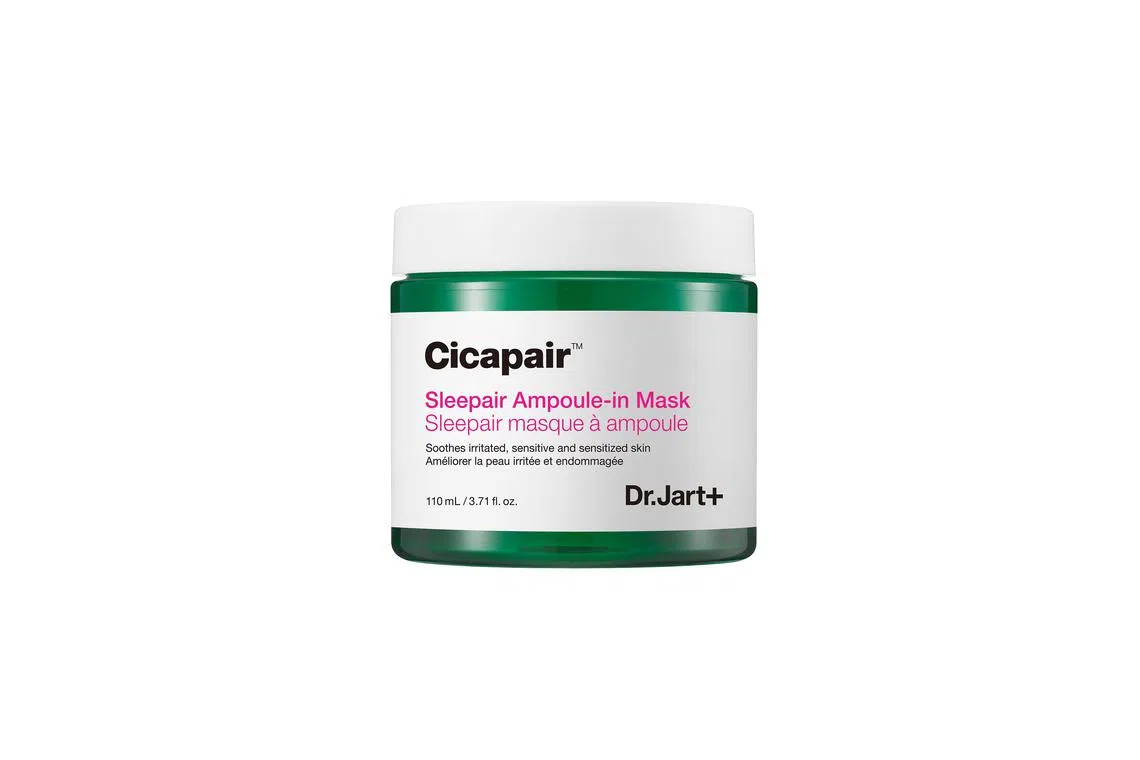
Cicapair Sleepair Ampoule in Mask, $58
PHOTO: DR JART+
In 2016, this Korean pioneer of the BB Cream dropped its Cicapair range, a skincare line that focuses on soothing and repairing sensitive, irritated and stressed skin.
The star ingredient in the range is Centella asiatica, a plant extract that has been used for centuries in traditional medicine for its healing and soothing properties.
Centella asiatica is rich in antioxidants, amino acids and active compounds which help to calm inflammation, strengthen the skin’s barrier and promote skin regeneration.
One of the brand’s bestsellers, the Cicapair Tiger Grass Cream has a lightweight texture and helps to moisturise, soothe and protect the skin while providing natural-looking coverage to even out redness.

